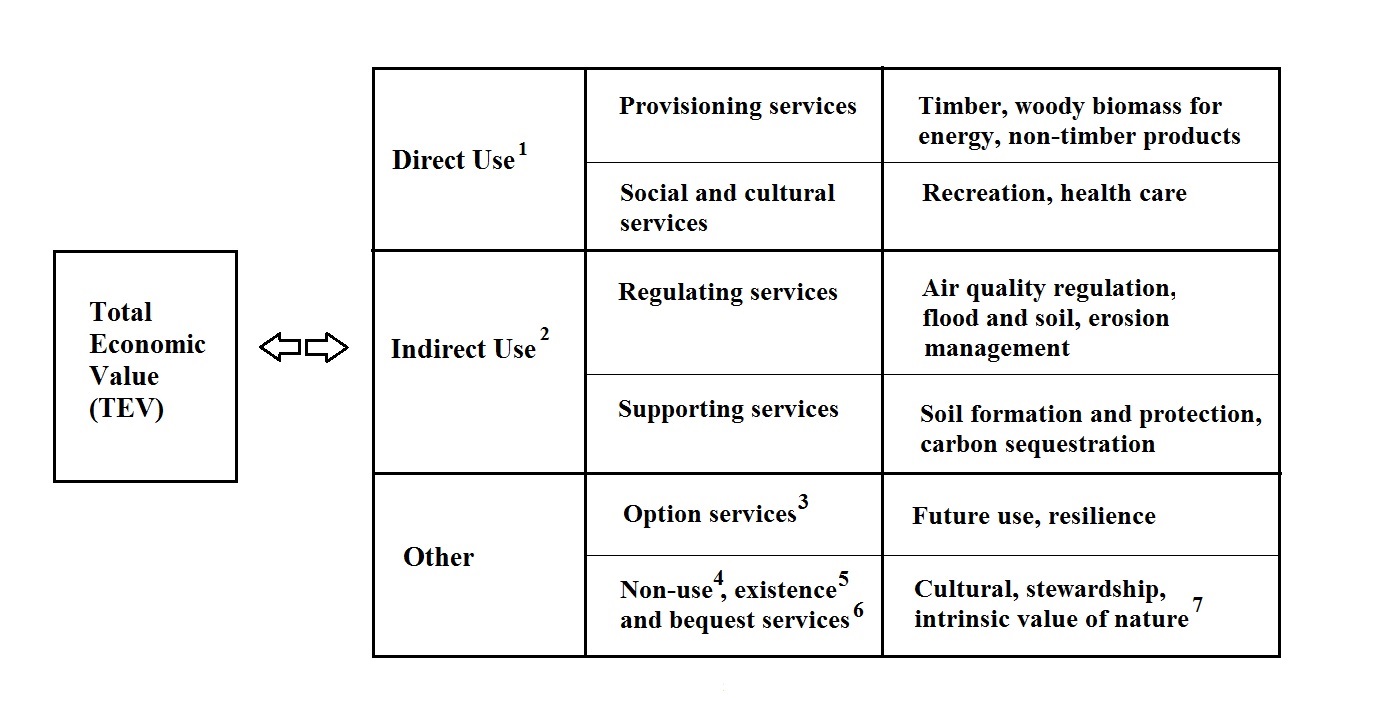
Key components of the Total Economic Value concept. Figure adapted from
As of the
[1] Direct use value is where individuals make actual or planned use of an ES.
[2] Indirect use value is where individuals benefit from ES supported by a resource, rather than by using it directly.
[3] Option value is the value that people place on having the option to use a resource in the future.
[4] Non-use value is the value that is derived from the knowledge that the natural environment is maintained. This comprises bequest value, altruistic value and existence value.
[5] Existence is the value individuals derive from the knowledge that an ecosystem resource exists, even though they have no current or planned use for it;
[6] Bequest value (an example of non-use value) is the value individuals attach to the fact that the resource will be available for use by future generations.
[7] Intrinsic value is the worth of a good or service for its own sake.